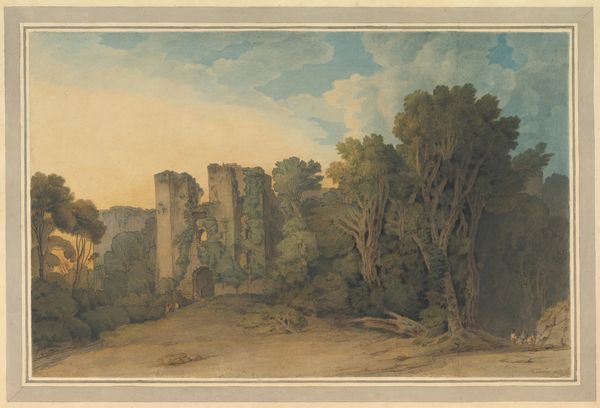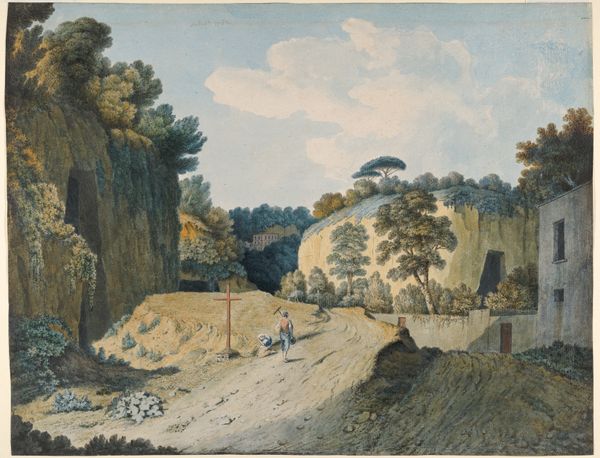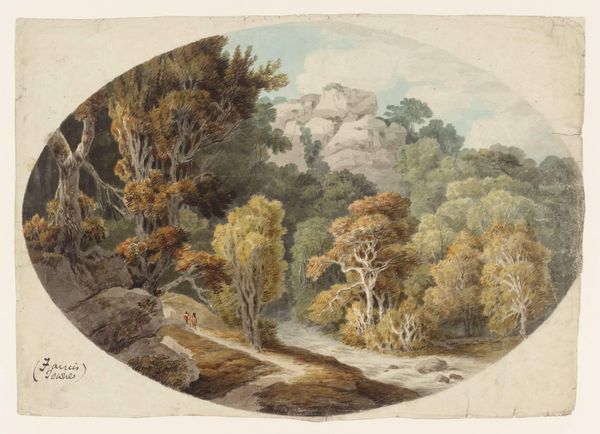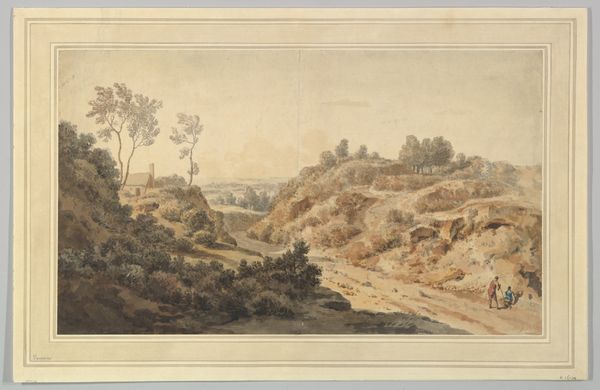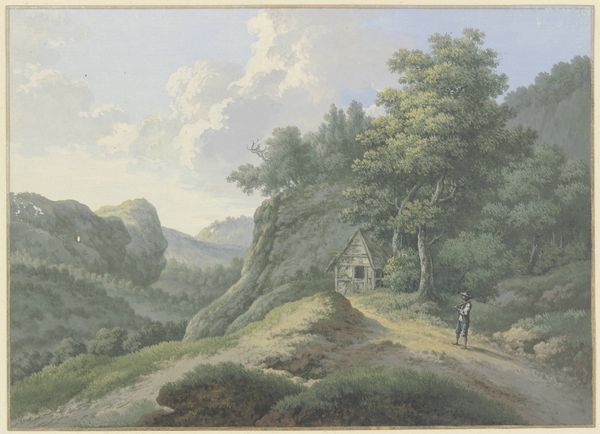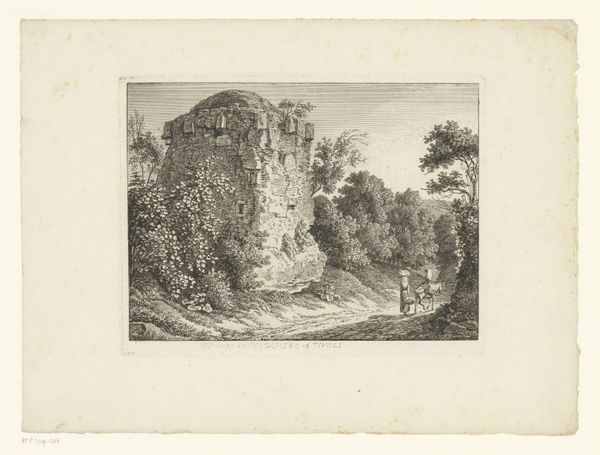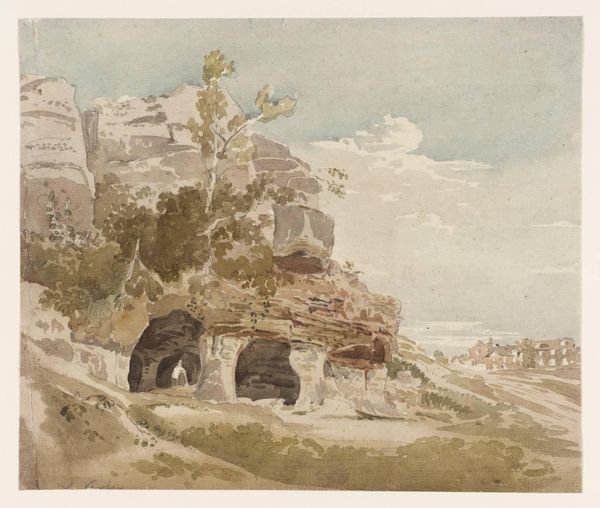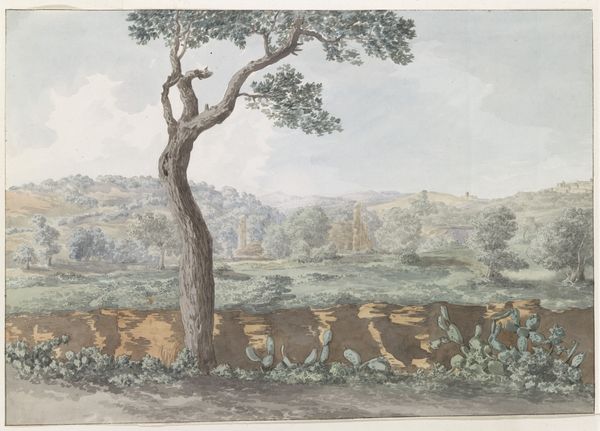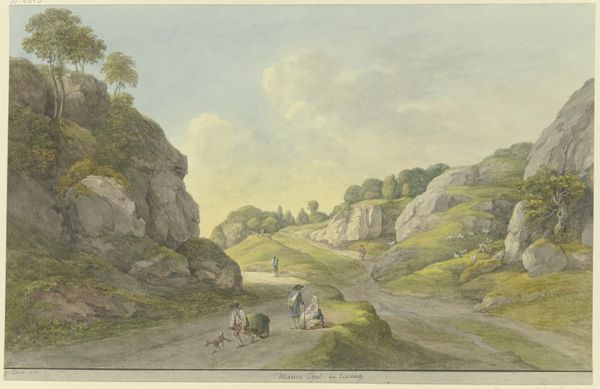
drawing, plein-air, watercolor
#
drawing
#
water colours
#
plein-air
#
landscape
#
watercolor
#
romanticism
#
cityscape
Dimensions: Sheet: 8 1/4 × 10 1/2 in. (20.9 × 26.6 cm)
Copyright: Public Domain
Curator: Oh, look at this! It's Francis Towne's watercolor, "An Ivy Covered Ruin," painted between 1785 and 1795. Editor: Aww, that's so melancholic! I immediately imagine someone aimlessly wandering amidst ruins, reminiscing about forgotten times. What do you make of it? Curator: Ruins in art are heavy with symbolism, especially during the Romantic era. They often represent the transience of human achievement, the power of nature to reclaim what was built, and even a nostalgic longing for a lost past. Thinkers pondered civilization’s cyclical rise and fall. Editor: I see that, for sure! It almost feels like nature's got beef with architecture. Like, "You built it? I'll grow over it!". I wonder, does the ruin look particularly English to you? Is there anything archetypal that tells you more? Curator: Well, Francis Towne spent a good amount of time in Italy studying ruins and applying his precise plein-air approach. It’s more generally Neoclassical in the crisp forms but very English because of its pastoral calm. You get a very particular sensation, which fits into the late 1700s, but which in time keeps recurring. Editor: Neoclassical calm—I like that! It's like, even in the face of decay, there's a sort of serene acceptance, you know? And speaking of those ivy covered walls, what sort of feeling did the artists want us to get from his drawings? Did Towne use a specific perspective trick here to amplify the romantic aspect? Curator: There is a play of light, sure. But I’d say it’s mainly the stark contrast between geometric man-made structures and wild organic growth which tells a story. That little dark entrance adds a dash of mystery, no? What does that gap conceal, in terms of the historical meaning of this cultural item? Editor: Definitely, maybe a portal through time itself? This reminds me that beauty is there, waiting to be noticed everywhere even within decay and historical absence. Curator: Quite beautifully said! It’s paintings like these that bring to mind what we preserve and what we leave to weather the test of time. Editor: And which parts we choose to remember or leave in obscurity to give rise to future ruins that await rediscovery. What a fantastic point. Thank you.
Comments
No comments
Be the first to comment and join the conversation on the ultimate creative platform.
